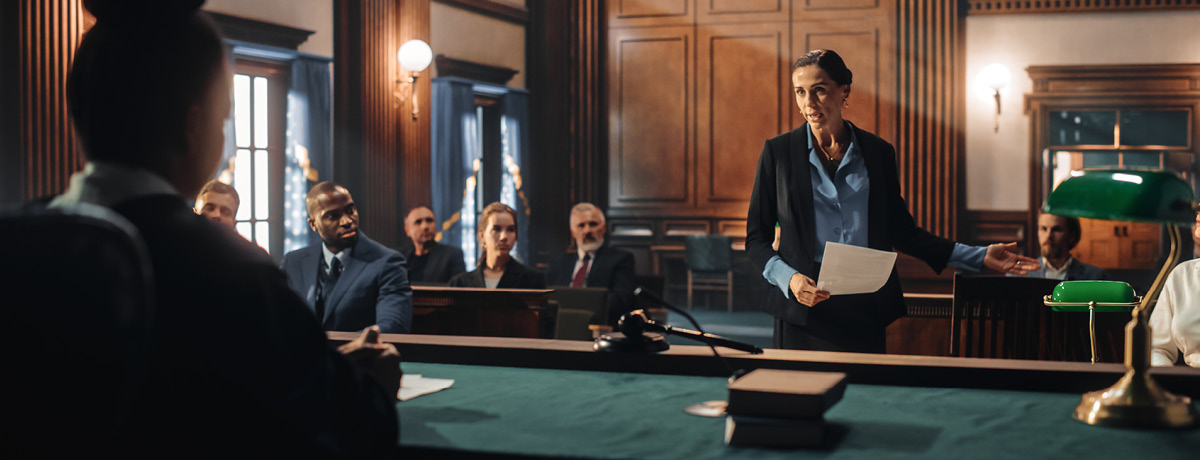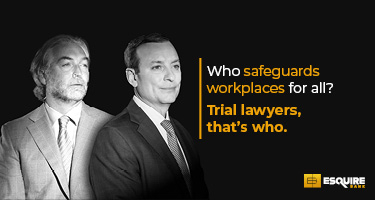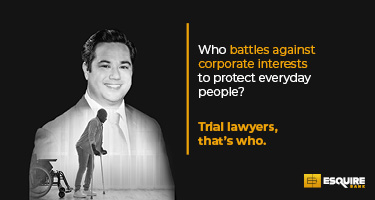Anchoring bias in litigation, while well known, is worth revisiting in the post-Covid era of increasing nuclear verdicts. Defense litigators and insurance professionals commonly point to such verdicts as the product of a growing failure to appreciate the value of a dollar, and a heightened desire of jurors to “do justice” by sending a message to the defense with excessive compensatory awards in cases where punitive damages are not permitted.
Exposing the subconscious effect of anchoring bias, educating jurors about its intended influence on their valuation of damages and providing a meaningful counter-anchor are empirically proven strategies for countering anchoring bias and reducing its effect on non-economic damage awards. Those strategies, and the proven effect of anchoring bias that they are intended to redress, are the subject of this article.
What is Anchoring Bias?
When we try to decide the value of something without much starting information or objective context, our valuation oftentimes is skewed by the initial estimate we are given. This phenomenon is known in psychology as “anchoring bias.” It is a type of judgmental heuristic: a mental shortcut our brain uses to “reduce the complex tasks of assessing probabilities and predicting values to simpler judgmental operations.”[1]
In litigation, anchoring bias can be implanted in jurors’ minds by the plaintiff’s ad damnum request—i.e., the amount of non-economic damages the plaintiff’s attorney asks the jury to award. Research dating back to the 1950s generally has shown that higher ad damnum requests lead to higher judgments, including the types of awards now apocalyptically described as “nuclear” (or “thermonuclear” in more dramatic circles).[2]
The anchoring effect becomes more pronounced the less we know about the topic,[3] as demonstrated by my recent attempt to purchase ballerina slippers for my daughter’s birthday. I unwittingly began at the fancy store in the mall where I found a pair for $50. Despite my lack of knowledge about ballerinas and their slippers, that price seemed too high, but the anchor was set. I went to the less fancy store, but still in the mall, and purchased a pair for $30. It seemed like a good deal because my valuation judgment subconsciously was skewed by the $50 sticker price I initially encountered. When I got home, my wife kindly informed me that the same $30 pair sells at Wal-Mart for under $15.
Why Does Anchoring Bias Matter in Litigation?
Like me with the ballerina slippers, jurors in tort cases often have little more than their gut to rely upon in deciding an appropriate dollar amount for “pain and suffering,” “loss of enjoyment of life,” and other non-economic damages, the value of which is inherently subjective. The susceptibility of jurors to the effects of anchoring bias has been demonstrated in numerous studies based on real-life data, as well as experiments using mock jurors. One of the earlier studies, conducted in 1980 by James Zuehl, asked three groups of mock jurors to award damages based on the same personal-injury case. The number of damages requested by the plaintiff’s attorney—fancily known as the ad damnum request—varied for each group as either $10,000, $75,000 or $150,000. As predicted, non-economic damages positively correlated with the ad damnum request given to each group, with resulting average awards of $18,000, $62,800 and $101,400, respectively.[4]
Subsequent studies have provided more nuance on the effects of anchoring bias in litigation, as well as the efficacy of counter-anchoring strategies.[5] Unfortunately for defendants, research largely has shown that the more the plaintiff asks for, the more he is likely to get.[6] Even when jurors negatively respond to an exorbitant damages request as being unreasonable or “greedy,” that figure still takes hold in the subconscious and generally plays in the plaintiff’s favor by the time of deliberations.[7] This was demonstrated in a more extreme variation of the Zuehl study in which mock jurors were divided into four groups and presented with varying ad damnum requests of $100, $20K, $5M and $1B, respectively.[8] While participants in the latter groups scoffed at the requests of $5M and $1B as being arbitrary and excessive (as I did with the $50 ballerina slippers), they still awarded significantly higher damages than groups presented with the lower ad damnum requests of $100 and $20,000.[9]
Does Offering a Counter-Anchor Work?
The bright side for us on the defense side is a rebuttal ad damnum, or “counter-anchor,” generally has been shown to reduce damage awards.[10] The efficacy of counter-anchoring was affirmed more recently in a study conducted by jury consultants in which the only difference between the two groups of mock jurors was that the experimental group was presented with a counter-anchor by the defense, whereas the control group was not. The experimental group awarded 33% less damages than the control group.[11]
Won’t a Counter-Anchor Undermine Our Liability Defense?
Defendants, understandably, can be reluctant to suggest a counter-anchor for fear jurors will perceive it as an admission to liability. But research indicates jurors are apt in handling alternative, hedged arguments in which defendants offer counter-anchors as a backup argument to their primary defense against liability.
A 2016 experiment divided mock jurors into six groups and presented each group with the same medical malpractice case, in which liability was a close call.[12] The damages arguments varied by group based on the plaintiff asking for either $250,000 or $5 million, and the defense either offering a counter-anchor of $50,000, or not giving a counter-anchor and instead attacking or ignoring the plaintiff’s ad damnum request. The results showed that offering a counter-anchor actually increased the defense’s chance of prevailing on liability by 16% to 19% and reduced the amount of non-economic damages by 41% in comparison to defendants who did not provide a counter ad damnum request. The study also reaffirmed the power of anchoring bias: the damages awarded by simulated juries were over 430% higher when the plaintiff requested $5 million as opposed to $250,000.[13]
Expose and Educate
Exposing anchoring bias and educating jurors about it have proven to be effective in deflating its inflationary effects. In a study where mock jurors were asked to decide the length of a defendant's prisons sentence, the defense responded to the prosecutor's ad damnum request for a long prison sentence by either 1) ignoring the prosecutor's anchor, 2) exposing the intended effect of anchoring bias, 3) providing a counter request for a lower sentence, or 4) exposing anchoring bias and counter-anchoring with a request for a low sentence.[1] Exposing the intended effect of anchoring bias did not, by itself, have a significant effect on sentencing. But the combined strategy of exposing anchoring bias and countering with a request for a low sentence did prove effective, reducing sentencing outcomes by between 37% and 45%.[2]
In the civil context, defendants should consider not only exposing anchoring bias, but also exposing tactics designed to invoke a punitive response in a case where the award is confined to compensatory damages. This would begin with educating the jury about the distinct purposes of compensatory and punitive damages, and emphasizing punitive damages are not recoverable in the case at hand. This strategy is particularly worth consideration when the plaintiff uses reptile tactics—i.e., attacking a corporate defendant for poor safety practices as a means of provoking a punitive response in the jury’s award of compensatory non-economic damages. Shining a light on such tactics can undermine the credibility of the plaintiff’s arguments on damages and strengthen the integrity of the defense’s counter ad damnum request.
Won’t a Counter-Anchor Create a Floor on Damages?
While a counter-anchor generally does not negatively impact jurors’ liability determination (unless the defense on liability is particularly strong), there is another fear about counter-anchoring: Will the defense’s counter ad damnum request be treated as a floor on damages? If so, doesn’t that increase the chance of a midpoint verdict—i.e., an award where jurors simply split the monkey between the plaintiff’s and defendants’ respective ad damnum requests?
Defendants generally want to avoid a midpoint award because their counter ad damnum request must start above a floor of $0, whereas there is no ceiling to restrict how high the plaintiff goes with his ad damnum request. This reality naturally gives the plaintiff greater control over where the midpoint falls.
Maximize the Value of the Counter-Anchor Funds
Emphasizing the value of the funds proposed in the defense’s counter ad damnum request, particularly through damage modeling that resonates with the selected jurors, has proven to be effective against anchoring bias and in mitigating against the risk of the counter-anchor being treated as a floor on damages. Assume defendants present a counter ad damnum request of $500,000 in a case with $1,000,000 in economic damages, with a 65-year-old plaintiff who claims he no longer can play golf on the weekends. The defendants could bolster the credibility of their $500,000 counter-anchor by explaining it includes $50,000 to cover the green fees and club maintenance associated with 10 years of future golf the plaintiff is unable to play. To add further value, the defense could provide examples of the vacations, leisure activities and non-physical hobbies that could be funded with that $50,000. Most jurors would find $50,000 to be generous compensation for a casual golf hobby held by a 65-year-old plaintiff. The perceived generosity counteracts perceptions that the counter-anchor was merely a “lowball” bargaining response to the plaintiff’s ad damnum request.
Additional value can be added to the counter-anchor by recognizing the passive income that could be realized from conservatively investing all or a portion of the counter-anchor funds. Value also can be added by identifying ways in which the counter-anchor funds could be used to satisfy future economic needs (e.g., a child’s college tuition, or the remaining principal on a mortgage) that the plaintiff was not in a position to pay prior to the subject incident.
Ultimately, the purpose of anecdotes and damages models is to maximize the perceived value of every cent encompassed within the defendants’ counter-anchor. The desired effect is to bolster the credibility of the counter ad damnum request as providing a fair measure of the amount needed to make the plaintiff whole, without turning him into a lotto winner, and dispel perceptions that the defense’s counter ad damnum was offered merely as a lowball bargaining response to the plaintiff’s ad damnum. Conversely, this strategy can undermine the credibility of the plaintiff’s suggested number of damages, including per-diem arguments that base damages on the number of years or days remaining in the plaintiff’s life expectancy. While a person’s life expectancy is not arbitrary, the dollar amount assigned to each remaining day or year is oftentimes largely subjective and not explained in meaningful terms. The arbitrariness of that approach can be exposed and effectively countered through models that inject practical and relative value into the number of damages called for in the defense’s counter ad damnum request.
The field of psychology has found the reason that well-constructed damages models are effective is because they capitalize on jurors’ tendency to use gist-based recollective thinking. Studies have shown that jurors, like most adults, recall the gist of information in terms of low, medium or high (e.g., a high amount of past medical expenses, or an injury of low severity), rather than in the literal, verbatim terms in which the information was presented to them at trial.[16] Jurors also tend to use gist-based thinking to categorize an attorney’s ad damnum request as low, medium or high. When the defense attorney adds meaning to the counter-anchor by explaining its relative value through practical models and relatable illustrations, and also educates jurors about anchoring bias and the non-punitive purpose of compensatory damages, the jury is more likely to perceive the counter-anchor as a genuine valuation, rather than a lowball counteroffer. The more value jurors ascribe to the counter-anchor, the more weight they are likely to place on it in determining the award of non-economic damages, in the event liability is imposed.[17]
Introduce Counter-Anchor Early in Admitted-Liability Cases
In cases where liability is difficult to contest, it is worthwhile to consider introducing a counter-anchor early and even tying it into the theme of the defense’s case. One reason the plaintiff’s anchor is so effective is because it is the first value for non-economic damages suggested to jurors and therefore becomes a reference point embedded in their subconscious. In a damages case, defendants should strive to make the counter-anchor the reference point by offering it to jurors at the outset of trial and reinforcing it in closing argument. As long as the counter-anchor is one juror likely would find reasonable and a significant sum of money (and assuming it is a value defendant are willing and able to pay), the jurors’ perception of the parties could be flipped in favor of the defense before the first witness is called.
Instead of believing they are having to sit through a tort trial because of a greedy defendant’s unwillingness to pay compensation owed to an injured plaintiff, the jury could begin the trial by viewing the defendants as fairly reasonable given their acceptance of liability and unequivocal willingness to pay the plaintiff what the jurors perceive as a reasonable or significant sum of money. In the same vein, jurors could begin to question the reasonableness and underlying motives of the plaintiff, asking themselves: “If the defendants have accepted liability and told us at the outset, they are willing to pay a significant amount of money, why are we having to sit through this trial?”
Motions in Limine
The strategies mentioned herein may be less relevant in jurisdictions that prevent or limit the extent to which attorneys can suggest specific of amounts of damages to jurors. Seeking pre-trial exclusion of such arguments also is worthwhile in jurisdictions that do not have brightline rules on making ad damnum requests to jurors.
At the end of the day, a trial judge’s pre-trial exclusion of ad damnum arguments is only as good as the paper it is on. Such rulings will not always prevent a bold attorney from ignoring the pre-trial order and presenting an exorbitant ad damnum request to the jury anyway. While the trial judge may reprimand the attorney and issue a limiting instruction, the bell already has been rung. Therefore, regardless of jurisdiction, a solid defense should consider anchoring bias in their trial preparation and develop a plan for deflating it through counter-anchoring and other proven strategies.Sloan Abernathy defends insurers, commercial transportation companies and corporate clients in litigation matters involving claims of personal injury, survival, wrongful death, property damage and premises liability, as well as coverage disputes, subrogation actions and contractual claims at Deutsch Kerrigan LLP. In every case, he strives to personalize and tailor the defense strategy to serve the individual needs of his clients and to keep his clients at ease with the confidence they are receiving a top-tier and thorough defense.


































